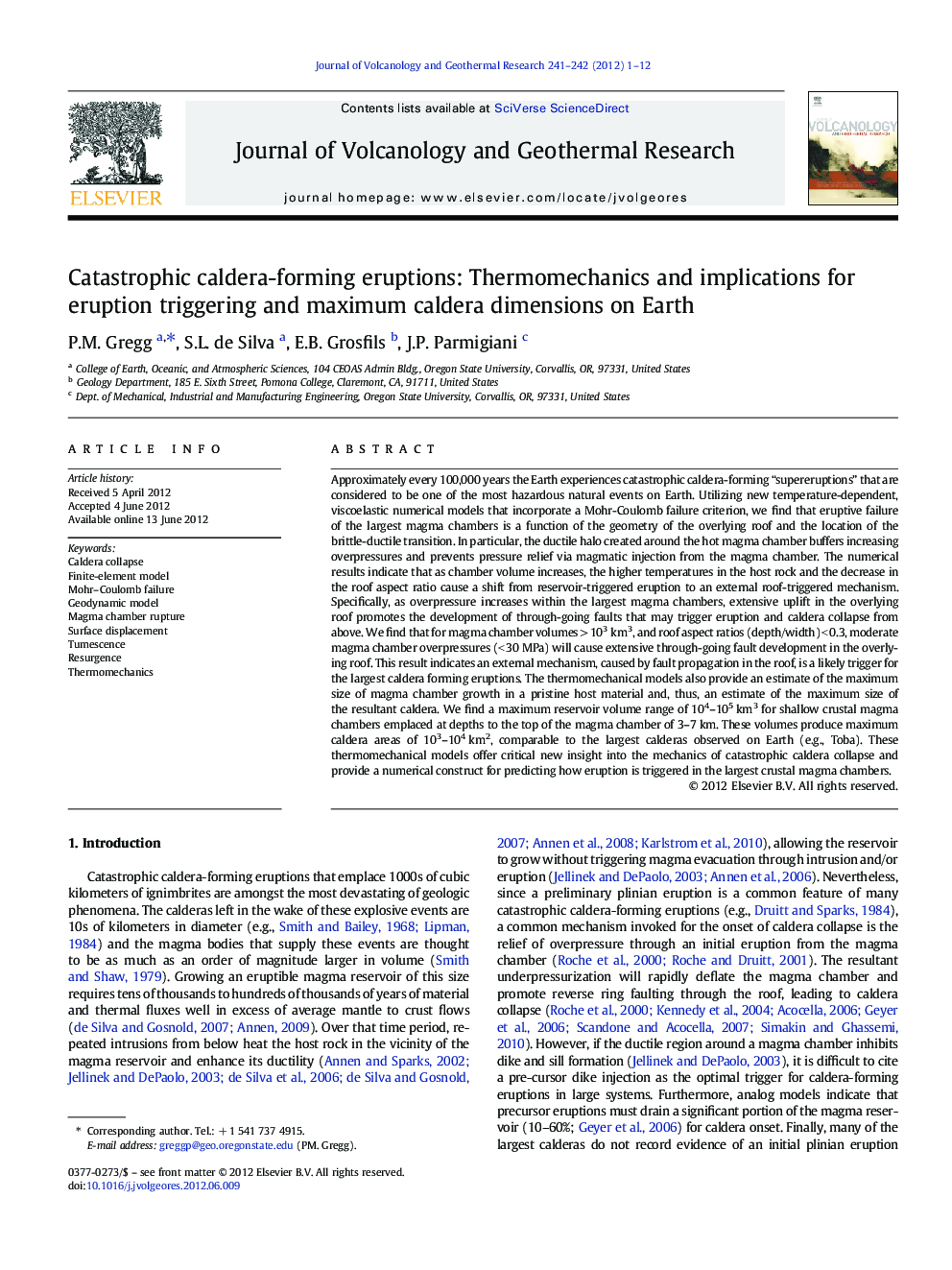| کد مقاله | کد نشریه | سال انتشار | مقاله انگلیسی | نسخه تمام متن |
|---|---|---|---|---|
| 4714883 | 1638376 | 2012 | 12 صفحه PDF | دانلود رایگان |

Approximately every 100,000 years the Earth experiences catastrophic caldera-forming “supereruptions” that are considered to be one of the most hazardous natural events on Earth. Utilizing new temperature-dependent, viscoelastic numerical models that incorporate a Mohr-Coulomb failure criterion, we find that eruptive failure of the largest magma chambers is a function of the geometry of the overlying roof and the location of the brittle-ductile transition. In particular, the ductile halo created around the hot magma chamber buffers increasing overpressures and prevents pressure relief via magmatic injection from the magma chamber. The numerical results indicate that as chamber volume increases, the higher temperatures in the host rock and the decrease in the roof aspect ratio cause a shift from reservoir-triggered eruption to an external roof-triggered mechanism. Specifically, as overpressure increases within the largest magma chambers, extensive uplift in the overlying roof promotes the development of through-going faults that may trigger eruption and caldera collapse from above. We find that for magma chamber volumes > 103 km3, and roof aspect ratios (depth/width) < 0.3, moderate magma chamber overpressures (< 30 MPa) will cause extensive through-going fault development in the overlying roof. This result indicates an external mechanism, caused by fault propagation in the roof, is a likely trigger for the largest caldera forming eruptions. The thermomechanical models also provide an estimate of the maximum size of magma chamber growth in a pristine host material and, thus, an estimate of the maximum size of the resultant caldera. We find a maximum reservoir volume range of 104–105 km3 for shallow crustal magma chambers emplaced at depths to the top of the magma chamber of 3–7 km. These volumes produce maximum caldera areas of 103–104 km2, comparable to the largest calderas observed on Earth (e.g., Toba). These thermomechanical models offer critical new insight into the mechanics of catastrophic caldera collapse and provide a numerical construct for predicting how eruption is triggered in the largest crustal magma chambers.
► We develop a new temperature-dependent viscoelastic model for magma chambers.
► Mohr–Coulomb failure criterion is utilized to examine fault generation in the overlying roof.
► Results indicate an external trigger for caldera formation of large chambers.
► Roof aspect ratio and rheology are primary controls on caldera formation.
► Our model provides estimates for the maximum magma chamber size and caldera size.
Journal: Journal of Volcanology and Geothermal Research - Volumes 241–242, 1 October 2012, Pages 1–12